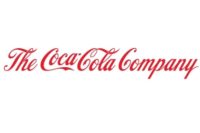
Obesity: WEIGHING THE OPINIONS
The stats |
|
The topic of obesity
has statisticians working
overtime. Here are a few of their findings. • In 1980, 45 percent of adults in the United States were overweight or obese, by 1990, it was 55 percent. Today it s 65 percent. Fifteen percent of children between the ages 6 to 19 are overweight, an increase of 10 percent during the past 10 years. • The cost of obesity to the U.S. economy is estimated to be $120 billion a year in medical expenses and lost productivity. • Traditional clothing retailers now report that more than 20 percent of all clothing sales for women are plus sizes. • Obesity was the most reported food story of 2003, with the Atkins Diet following in second place. • Demand for eggs created by Atkins Diet followers created a 20-year high price on eggs in 2003. • Nearly 32 million Americans say they are on some kind of low-carb diet. • Studies of twins indicate 50 to 70 percent of the tendency toward obesity is inherited. The chances of becoming obese if both parents are obese is 60 to 80 percent. The chances when both parents are thin is 9 percent. There is no indication that the tendency to be overweight is inherited. • Worldwide, obesity affects 300 million adults and 17.6 million children younger than five. • Of the 10.3 million cases of cancer per year, 3 to 4 million may be preventable with proper diet and exercise, according to the World Health Organization. • About 150 million people worldwide have Type II diabetes. That figure is expected to double by 2025 due to aging, diet, obesity and sedentary lifestyle. • Americans spend more than $33 billion annually on weight-loss products and services. Sources: USA Today; Hunter Public Relations; Harris Interactive/Knight
Ridder/Tribune Business News; Euromonitor/World Health Organization;
IRI/The Centers for Disease Control; eMedical Supplies and Equipment
Inc. |
“There’s current evidence that healthier, nutritional eating and weight-loss objectives are driving significant shopper shifts and growth in shelf-stable, refrigerated and frozen aisles,” it says. BI
calorie, low-carbohydrate proposition.”
Skyy Sport will be available in 12-ounce six-packs, and will contain 5 percent alcohol by volume. Pricing will be similar to Skyy Blue.
“The test has helped us accomplish [greater
dairy product availability],” said Kevin Stiles, vice president,
marketing and industry coordination for Midwest Dairy Association, in
a recent statement. “We’re confident that these test results
will be useful as we encourage widespread adoption of dairy vending in
other markets of the country.”
New age weight-loss platform
Tropicana rolls light juice
on the list of healthful drinks, but growing concerns about sugar, even those derived from fruits, are
forcing juice-makers to come up with alternatives to traditional juice.
Consumer disconnect
- More than 97 percent of respondents felt a personal need to lose weight, yet only 25 percent follow a diet program.
-
More than 83 percent of adults claim to want complete nutritional information on menus, but only 39 percent of respondents say the information would influence their food choices.
-
While losing weight is fundamentally a function of calories expended exceeding calories ingested, only 35 percent count calories.
-
For those who monitor their food intake, the carb-counters and fat counters are equally matched. Forty percent watch carbohydrates and 40 percent watch fat intake.



